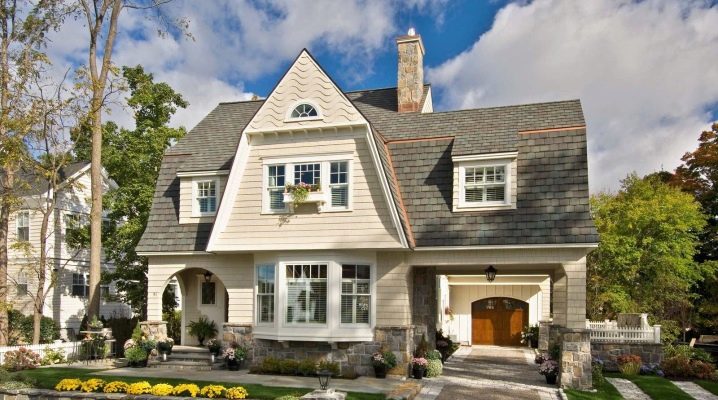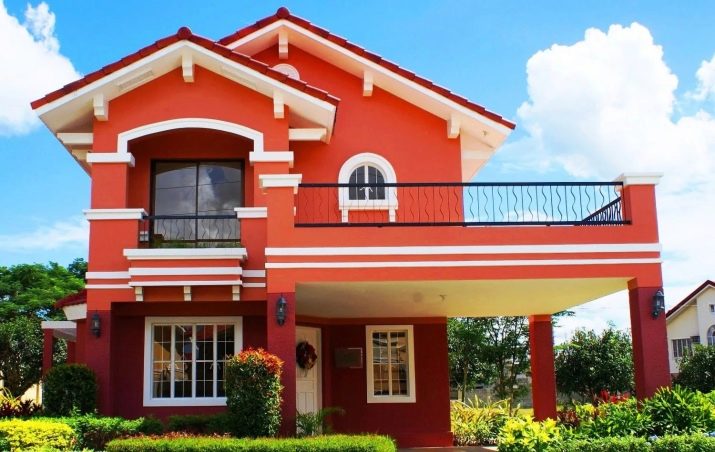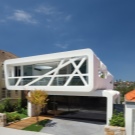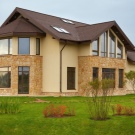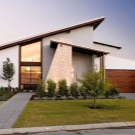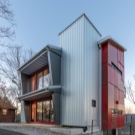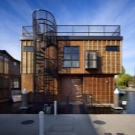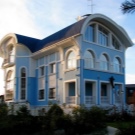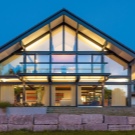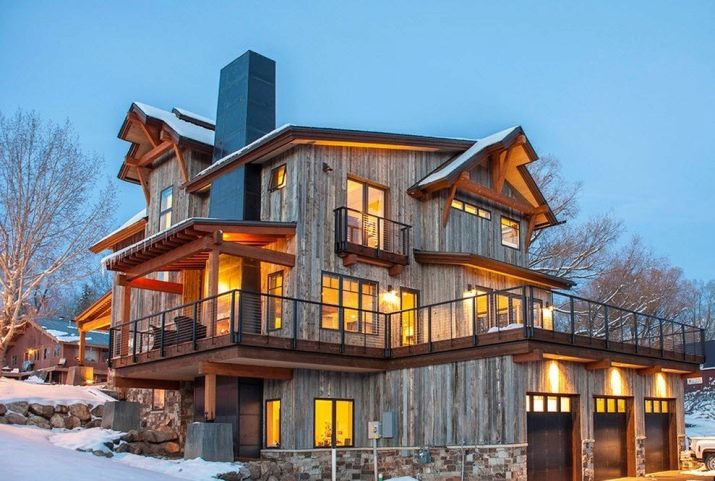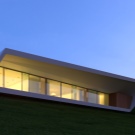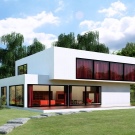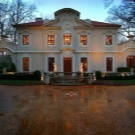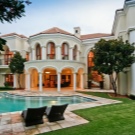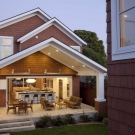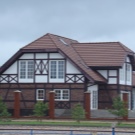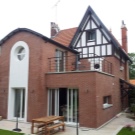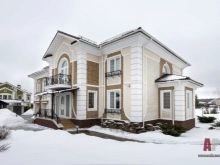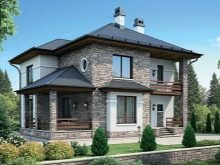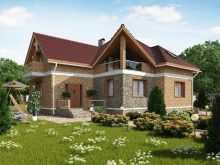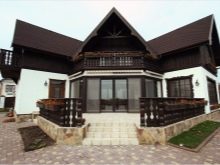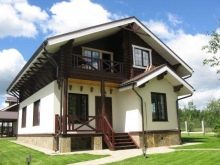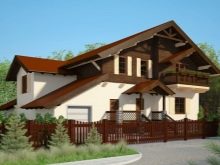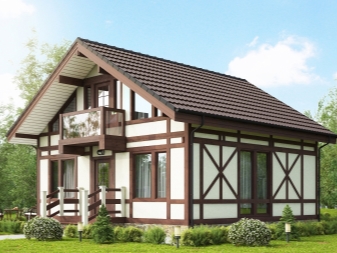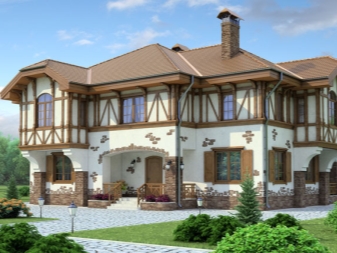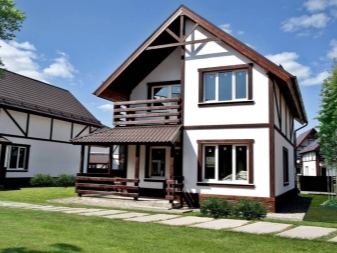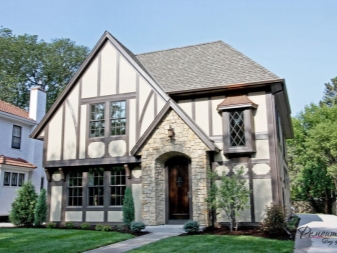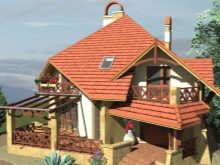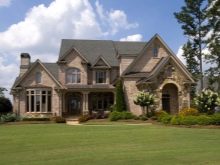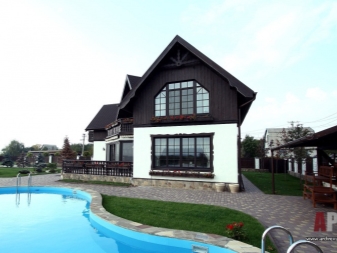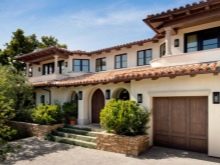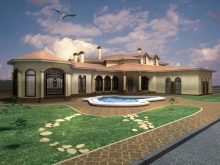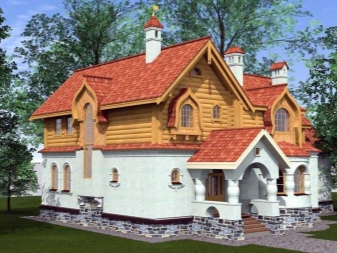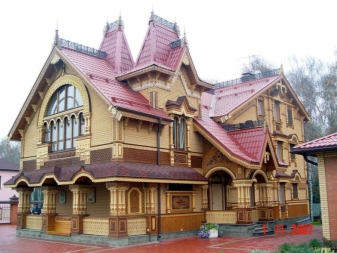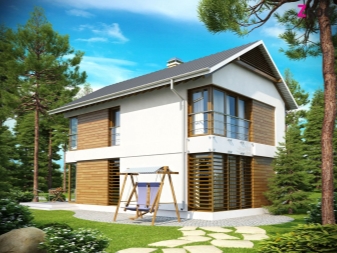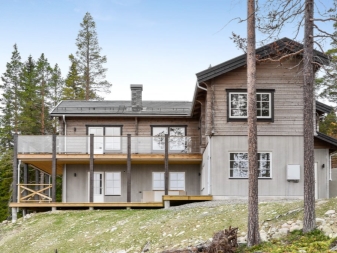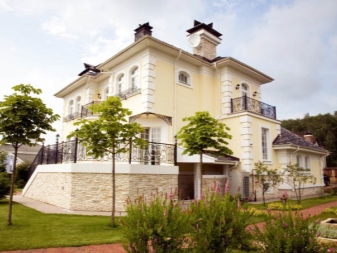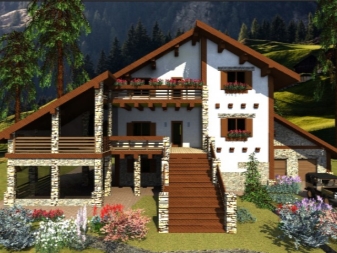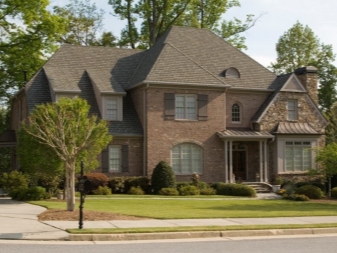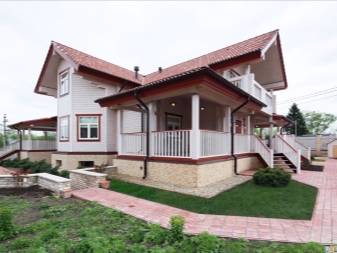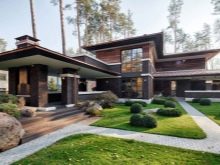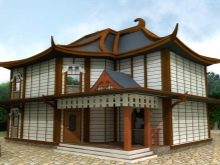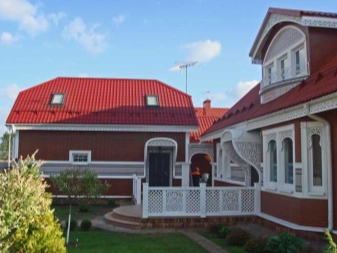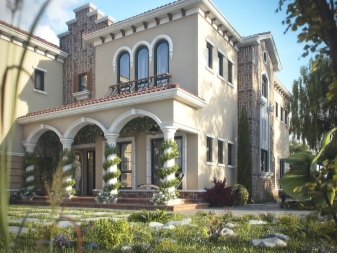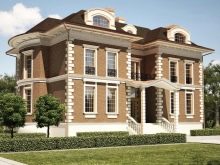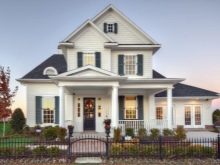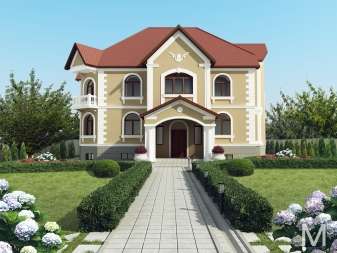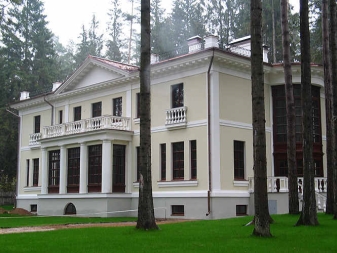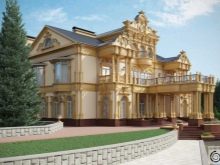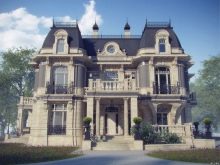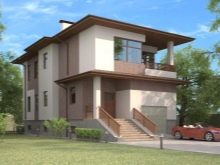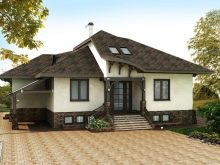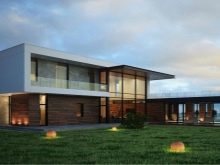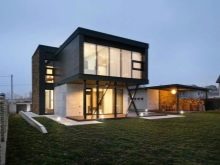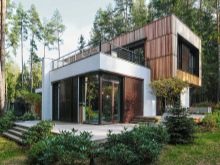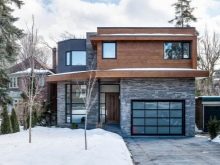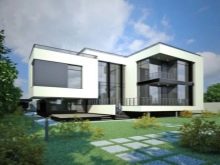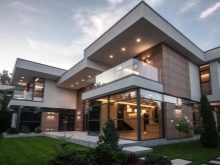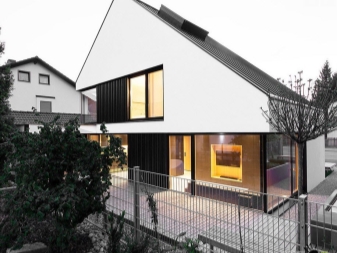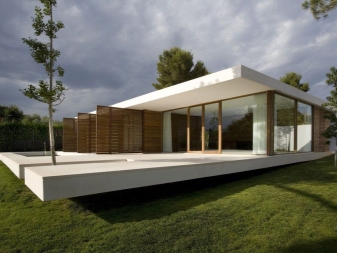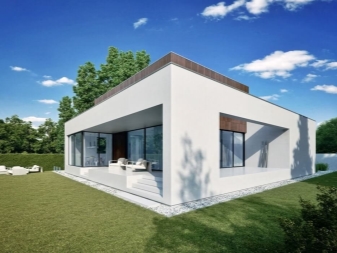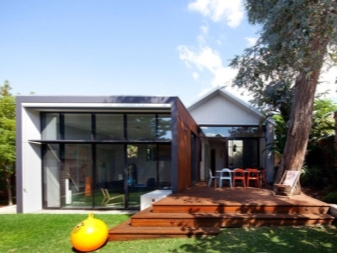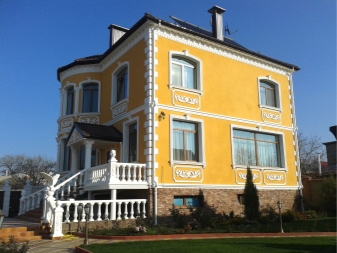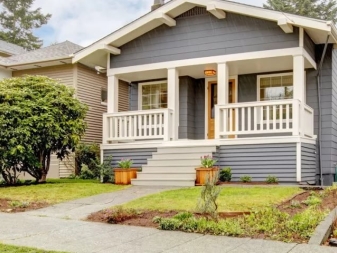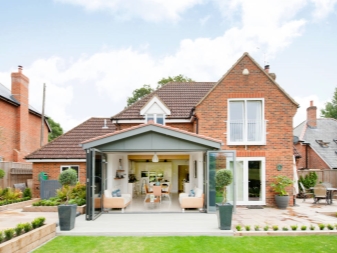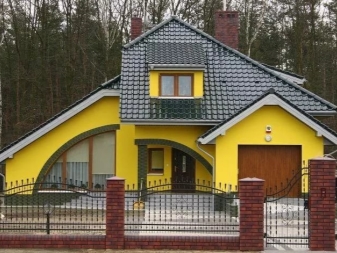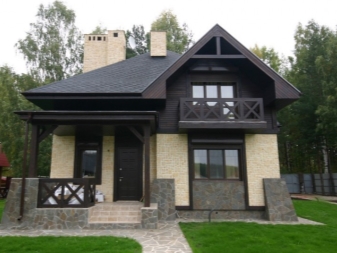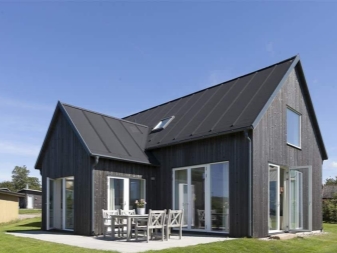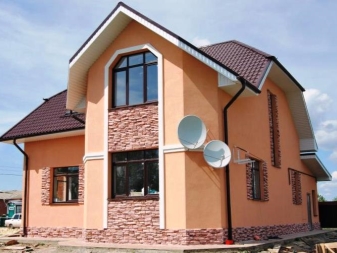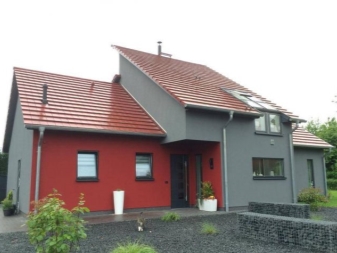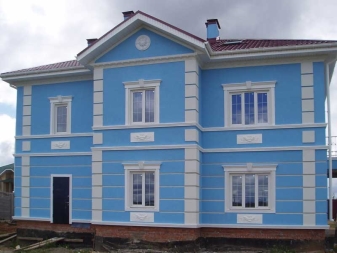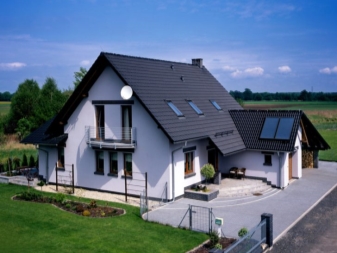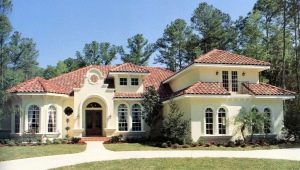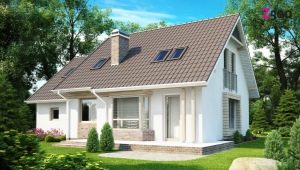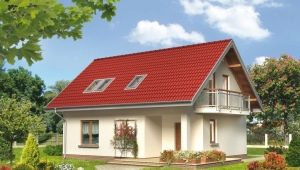Facades of houses in various fashionable styles
The appearance of the home, when it is not decorated in a certain style, can look very unconvincing. The composition of the construction seems unfinished. If you accurately and correctly choose the best among fashion styles, you can achieve a stunning effect by demonstrating your individuality and delicate taste.
Special features
Popular styles of home decoration can emphasize their external advantages, express the high taste of the owners and even make the building an ornament to the surroundings. But we must take into account not only the peculiarities of a particular style, but also its relevance in certain cases.
Pay attention to how the houses are decorated nearby, consider the compatibility with them, and then the result will please you for sure.
Houses in the English style are recognized immediately; they are distinguished by external restraint, elegant, although even very expensive materials and structures can be used in construction.The facades of such dwellings are finished with brick masonry or tiles that mimic this masonry, for roofing they use laconic shingles.
The buildings are invariably made in two floors, their walls are straight, the windows are high and divided. The porch is never made big; the columns should not be too large, either. Attic in the English style is required. The introduction of a small garden helps to underline its refinement.
Variety of options
It is not only the English style that can be used in the decoration of the facades of a private city or country house. Let us examine a few more options for such design, before proceeding to the analysis of the most popular solutions.
Chalet
Despite the association with the alpine snow-capped peaks, in fact, this style appeared in a quite flat area - in France. An important feature of its suitability is mainly for small-sized buildings located outside the city. Luxury mansions of a large area, as well as urban cottages with the spirit of the chalet get along poorly.
Exterior features: a combination of stone foundation, wooden walls and wood roof.Experiments with building materials are welcome if they are natural. They try to make more windows, organize a balcony, a veranda and add an attic.
Half-timbered houses
This is a house, as if assembled from a designer. Wooden beams go both vertically and horizontally and diagonally; They can be painted either dark brown or varnished.
Important: imitating the style of this half-timbered house on a brick house, you will save money and create a quite durable facade.
Deutsch
Traditional German style is close to the half-timbered, at least in terms of practicality, comfort and outward modesty. Similarly, the main structural materials are wood and stone. For the design of the walls, along with the beams, it is advisable to use decorative plaster.
The original move is the use of doors and windows of an intricate form, it is desirable to paint them in contrast to the main part of the facade, supplemented with wooden shutters.
Country music
Strictly speaking - this is not one monolithic stylistics, but several national traditions of architecture at once. The English format, which was discussed above, is also recognized by many designers as one of its branches.
Country - American style of origin, from the kindred Provence, he is more warm tones. Cold coloring is strictly contraindicated.
Bavarian
Unlike Provence, implies a strictly defined type of roof - flat, with two slopes. The windows are always small, equipped with shutters. Be sure to use art paintings on the entire wall, or at least next to the windows.
The traditional course in this stylistic direction is the use of decorative plaster under the original type of drawing.
Mediterranean
The facade in this style is always painted in warm colors, has many rounded contours, windows (small in size). In the design, borrowing of motifs (plots) from modern, country, half-timbered and other styles similar in spirit is welcomed.
Attention: Mediterranean facades require scrupulous thinking over details and accumulation of necessary materials. Clearly make a concept that you want to embody in the appearance of the home. Try to introduce more warm colors, they will emotionally warm in the most dank weather.
Russian
Such a facade should not seem at all archaic, old-fashioned. An important feature of this solution is its external harmony and the mandatory proportionality of the individual parts. The professional leaf cannot be used, instead of it it is expedient to apply a faltsevy roof.
As in other areas of the country (and that is how Russian designers classify), it makes sense to make the first floor stone, the second wooden. To emphasize the expressiveness of the idea will help carved shutters, trim, sometimes turrets with small windows.
Most popular
Modern stylistic decisions of the facades of houses are diverse; but among them there are those that are more demanded than others. Choosing one of these approaches, you can’t go wrong and design your home in a truly fashionable way. Let's write out several styles that are at the peak of popularity in 2017.
Scandinavian
The country house in the Scandinavian vein opens up a chain of natural styles. It is actively used wood, buildings should not even be painted, only in some places use varnish. If there is a desire to apply paint, it should be red or brown.
Provence
Whether or not the Provence is a completely autonomous style or only a direction within the style of the country, there are endless disputes. For the façade, however, another thing is important: the decoration should be either deliberately uneven brickwork, or a stone mosaic, or a combination of two previous materials with natural wood.
Paint the "face" of the house with warm colors, creating associations with nature, you can even use the usual white color. It makes sense to use round arches, alternating with traditional quadrilateral windows, it is desirable to set those and others, deliberately breaking the symmetry.
Important: Provencal facade is fundamentally incompatible with the use of metal, wood or glass. Overhead decorative items, if they fit this format, are quite appropriate.
Oriental
Making the facade of the house in the eastern spirit is very much in demand, but we must immediately clarify what exactly is meant.
Imitation of Japanese architecture is immediately recognized by:
- almost flat roof with a significant exit eaves for its contour;
- differences in height of floors resembling frills on clothes;
- smooth bending lines;
- winter gardens combined with glazed verandas;
- straw or bamboo shutters.
The jointing lines must be made contrasting to the wall, to create them they use both the installation of boards (beams) and the laying of a decorative stone or tile on the basement.
The Japanese solution is unthinkable at the expense of only one stone, be sure to use wood and tile.
If among Eastern traditions you have chosen the Arab branch, you need to get the most airiness and lightness from the front of the house. It should be symmetrical, but at the same time a view from the side of any arbitrarily chosen wing reveals a deliberate asymmetry.
Classical
One-storey house, as well as built in two floors, can be decorated in a classic style. The undoubted advantage of this solution is good visual compatibility with the surrounding buildings, but without loss of individuality. The classics necessarily include the symmetry of the layout of the facade, including the placement of window and door openings. Decoration with eaves, columns and semi-columns, carved elements, stucco and balustrades is permissible.But to enter such a decor should be more careful than when choosing a baroque, so as not to create the feeling of kitsch.
As for building materials, they must be natural or at least their lightweight imitations. It is necessary to paint a facade in the combinations of bright and pastel paints checked by time. To make small details more noticeable, they are visually underlined in white or contrasting with the wall.
Baroque
Recognizing a baroque house is not particularly difficult, and it is difficult not to notice. At first glance, it reveals the luxury and pompous character of the facade, as if at the royal palace. Such decorations as pilaster and column, balcony are widespread. Almost always baroque facades are equipped with arches (usual and window openings presented in this form). Not uncommon and plaster moldings, as well as natural stone and marble, copper parts; as for colors, golden and white, silver tones dominate.
Modern
The design of the house in the modern epatage style, flexibly combines the newest elements and traditional details. Every building can be transformed in the appropriate spirit,adding some custom architectural forms.
It is important to avoid only rough ornaments, to apply decorative products with limited and thoughtful.
The stylish floral motifs and natural materials perfectly match the modernist approach. It is possible to decorate the facade with stucco, but without an excessive emphasis on it, the beauty of the basic material should not be overshadowed. Windows - large, reaching to the floor, often they make stained glass windows.
Loft
The name speaks for itself. Not long ago this industrial style was used only in interior decoration, but now it is also used in decorating facades.
A characteristic feature is a flat or slightly sloping roof, metal or concrete walls, windows are trying to be made as high and wide as possible.
Brick and natural stone can be used for decorative finishes; typical colors include gray and brown tones. Loft - the same case when expensive finishing materials are contraindicated.
High tech
Looks beautiful high-tech style, the characteristic features of which are:
- the rigor of geometry;
- use of large windows;
- glazed facades.
Neighborhood of a dwelling with a glazed gazebo, with a winter garden, surrounding the perimeter of the facade with a green lawn is gracefully perceived.
Important: even small décor elements should be used with care, they can destroy the composition with careless use.
Minimalism
The minimalistic facade is an elegant solution for a country house with a small area, it is recommended for adherents of creative experiments. The inherent features of minimalism are considered external restraint, simplicity of design and clarity of expression of the design idea.
Important: try to achieve the strictest observance of proportions, to exclude deviations from the given geometric shape. Welcome large windows, located on the background of large planes of the walls (as smooth as possible, this is a very significant condition).
The minimalistic facade of the house is always made from natural materials, not subjected to additional processing or processed to the smallest degree.
How to choose?
Acquainted with the descriptions of various styles of design of the facade, you simplify the choice. But it is necessary to focus not only on general considerations, but on your own taste.After all, a dwelling house should be pleasant first of all to its residents, and only then - to all the rest. It is also recommended when choosing to pay attention to the surrounding natural conditions, the landscape of the territory.
Think about financial opportunities, if the style implies solemn, magnificent decorations, construction is often unnecessarily expensive.
Beautiful design examples
Let's look at a few positive options for the design of the facade, which look good in almost any environment. And do not require unnecessary expenses.
For lovers of the Scandinavian style, frame-panel houses with an abundance of windows and glazed doors will surely attract their attention. The main thing is that the forms and details, although diverse, should be combined into a harmonious composition. The introduction of stone, ceramic tiles will help to rid the facade of the feeling of uniformity, monotony.
Almost any style perfectly combines decorative plaster. The original and beautiful course is a combination of a red-and-white plastered facade with a roof of dark colors and the same frames. When you want no less elegant, but more stringent design,the combination of steel-gray and red colors on the facade with soft red tones of the roof helps. If to add plaster inclusions of a tile and a mosaic, too it will turn out not bad.
A fresh and welcoming look is created by using white and blue in various proportions.
About what front materials for the cladding of the house are considered the best, see the following video.
